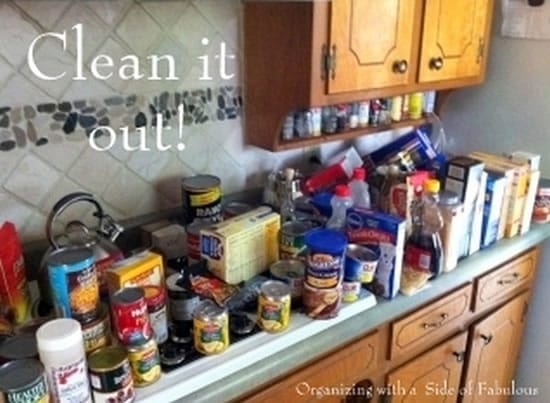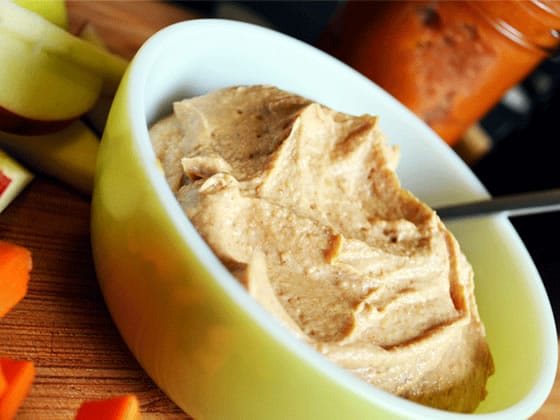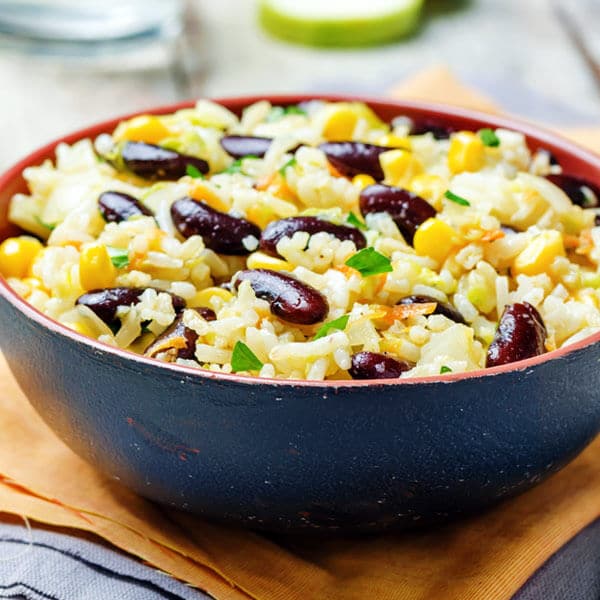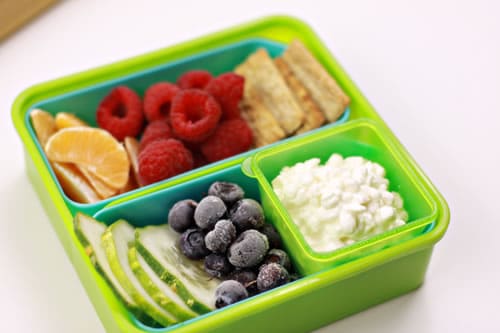Organizing Your Pantry for a Successful October Unprocessed Challenge
September 28, 2018

You’ve signed up for the October Unprocessed Challenge, and now you may open your pantry and despair. But there’s no need for that, Sunshine! I’m here to guide you through setting up your pantry so you’ll have a successful challenge.
Even though I eat unprocessed 75-80% of the time, getting to 95-100% for October can be daunting. By taking the time to clear out and organize your pantry, you’ll remove some of the most common obstacles that make us run for the nearest drive-thru.
How I approach each client’s pantry changes a bit according to the size, starting state of clutter, and whether they’re making any dietary changes. However, here are some key basics that will work in anyone’s pantry (or cabinets if you don’t have a pantry).
- Work though your pantry and food very systematically row by row, from one end to the other. Start at the bottom and work your way up or vice versa – whichever feels best to you.
- As you touch every single item on the row, first check the expiration date. If it’s expired, trash it (or compost it!). If not, read the label. Do all the ingredients meet the kitchen test? If not, put it into a pile to take to the food bank. If yes, is this a food item that will actually get eaten? If not, add it to the food bank pile. If so, put it back on the shelf.
- Once you’ve removed the expired, overly processed, and never-eat foods from the pantry, ask yourself: do you have food in other areas? Many people have spices near the stove, a separate beverage area, or may also have extra food squirreled away somewhere. Hit these places the same way you did the pantry: trashing expired goods and donating anything that doesn’t meet the challenge.
For many, this “tossing” part of the process feels wasteful. It is, but beating yourself up won’t help or change it. Instead, remember the feeling and use it to prevent over-purchasing the next time you’re at the grocery store. If you’re not going to eat it, don’t buy it. When you’re deciding what to eat for the week, look at what you already have and build around that. You’ll come out of the end of the month with a new view on food and will most likely not fall back into some of these old food habits.
Now that we’ve created some fabulous space in our pantry, it’s time to get it organized. Start by sorting like with like – grains, pastas, canned goods, breakfast, snacks, condiments, etc.
Pro tip: It’s easiest to do this by pulling everything out and using the countertops for sorting. However, if you don’t have the space or won’t be able to finish the job all in one go, sort everything within your shelving.
Once everything is sorted, you’ll want to arrange your pantry in a way that makes good sense. Think about how you plan meals and how often you use things. Staples are best at eye level. With these items, I like to create a flow similar to how I’d put a meal together. A pretty common one that I set up for clients is: rice to pasta to pasta sauce to canned tomatoes to canned vegetables to canned beans to canned soups to broths. Breakfast is then usually near the main meal staples. From that point, are there certain foods you want to eat less or snacks you want a child to ask permission for? These go up higher. Anything else can go lower, maintaining our sorted food categories.
Once everything has a home, maintenance becomes essential. Take a little time at the end of each meal (ideally) or at the end of the day (minimally) to put everything back where it lives. This can be done quickly and easily during commercial breaks. If you Tivo’ed, it’s even easier – just press pause until everything is put back. Daily maintenance assures you to never have too overwhelming of a pantry ever again!
Additional tips:
- You can expect this to take anywhere from 2-8 hours depending on the size and starting state of your pantry. Plan accordingly.
- If you transfer some items to canisters, labeling helps if the canisters aren’t clear. I like chalkboard labels because they’re easy to change with the contents.
- After buying groceries, take some time to put everything away properly. If you place new items behind older ones it helps prevent older items from going bad before being eaten.
- Check your pantry for expiration dates at least once or twice a year. This ensures that foods get eaten or donated before they go to waste.
Best of luck with your challenge, and if you have any questions specific to your pantry, leave them in the comments below!





















This used to be known as SPRING or AUTUMN CLEANING. It was done once or twice a year, especially during the prairie days of our country. Sadly, anyone under 60 probably has never heard of it, let alone done it. You actually take EVERYTHING out, including furniture, screws, containers, and hangings, cleaning everything completely. Then, what’s worthy goes back after everything dries or is finished being painted, fixed, etc. I do it once a year (Springtime) to get ready for the summer’s bounty. But, now, I live in an apartment in the middle of San Francisco, so the summer bounty is not from my own garden. When I did clean out my cupboard a few years back, I had three huge shopping bags of stuff that contained something wrong in them. It all went to a single mom with 3 children, unfortunately… I wish I could have sent them totally… Read more »
Thanks for your comment, Karen! Organic or not, I think it’s great that you gave the food you didn’t want to someone in need. I’m sure they were thankful.